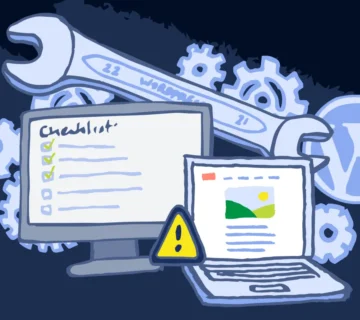What Is Website Maintenance, and What Are the Key Benefits?
Website maintenance is crucial for maintaining a brand, blog, or digital presence, ensuring its continued evolution and success. It also ensures the best user experience (UX) for all users. Organizing tasks by week, month, quarter, and year can help create a comprehensive plan. Experts in web design services have compiled a comprehensive guide on website maintenance, including costs, plans, and reasons for their importance. This guide helps ensure that your website remains updated and functional, ensuring its continued success.
What is website maintenance?
Website maintenance involves regular checks and updates to ensure your site is functioning optimally. It involves keeping up with security updates, promoting traffic growth, and ensuring the site is functioning correctly. Website maintenance services are crucial for engaging and retaining your audience, and various types of maintenance must be carried out periodically.
Different Types of Web Maintenance
Regular website maintenance is crucial for avoiding technical issues, improving the user experience, and ensuring higher SERP rankings. It can be overwhelming, but it’s essential to keep your website functioning smoothly. Some monthly maintenance tasks include:
1. Security Updates

To deal with vulnerabilities in the software, web development companies regularly release security patches. Security updates must be installed as soon as they become available, since they are critical to protecting your website from online threats.
2. Updating Plugins and Themes
Adding plugins and themes to your website might make it run better. They must, however, be updated to ensure high-level compatibility with cutting-edge web technologies like browsers and security patches, much like other software.
3. Updating Contents

It’s essential to keep your website’s content up to date to ensure that it is pertinent and accurate. It includes adding blog posts, improving product descriptions, and discarding outdated content. Because obsolete content can make your website look outdated and unprofessional and can deter prospective customers.
4. Backup and Disaster Recovery
Maintaining a current site backup is crucial for swift website recovery in case of significant issues, while disaster recovery planning ensures swift restoration in case of corruption or hacking.
5. Monitoring Website Performance and Optimization

Monitoring your website’s performance helps identify potential issues and take measures to keep it functioning smoothly. Improving website performance helps improve the speed and responsiveness of your website. It includes improving the speed at which pages load, optimizing pictures, and reducing the amount of code.
6. Scanning Security
Regular security checks or scanning are crucial for website maintenance to prevent threats, identify and resolve security issues, and enhance the user experience by identifying potential vulnerabilities and ensuring visitor trust in information security.
7. User Management

Managing your website user account is crucial, including creating and removing user accounts, regenerating the password, and handling permissions. It also involves erasing spam accounts to remove user lists.
8. Accessibility Testing
Ensuring the safety and usability of your website for all users is facilitated by testing accessibility. This includes those with limited internet speeds, those with disabilities, and users of mobile phones.
9. Website Uptime Monitoring
Ensuring that your website is accessible to users at all times is crucial. The aim is to maintain your website’s uptime at almost 100%. So, when your website gets down, you need to take the required steps to get it up and running.
10. SEO Monitoring

It’s essential to monitor your website’s SEO using SEO audit steps to ensure it ranks higher on the SERPs. It also includes monitoring the website’s ranking, linking, and traffic. SEO monitoring also helps in identifying possible issues and ways to fix them. Additionally, you may monitor the development of your website over time and assess its effectiveness.
11. Support and Web Maintenance Plan

Among the most important ways to make sure that your website is up to date every time is to take up a support and maintenance plan. This kind of web maintenance plan often includes all of the aforementioned services. Also, other crucial services like website hosting, SSL certificate, email support, etc.






No comment